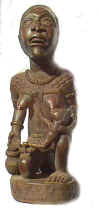 |
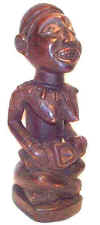 |
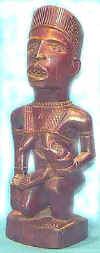 |
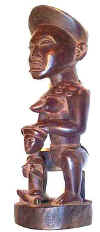 |
|
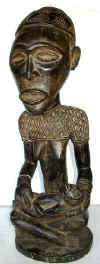 |
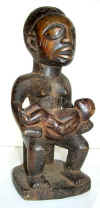 |
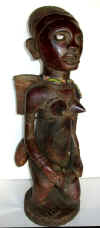 |
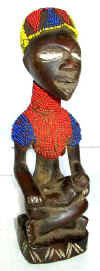 |
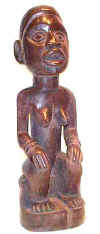 |
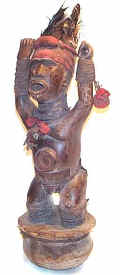 |
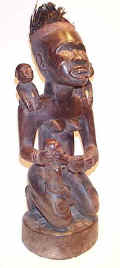 |
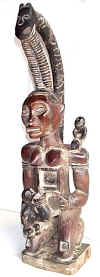 |
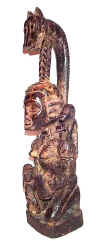 |
|
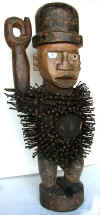 |
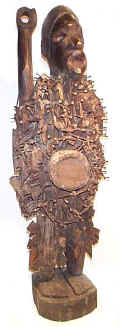 |
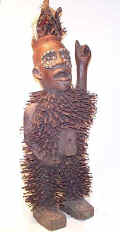 |
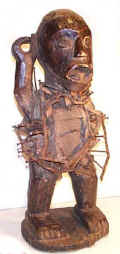 |
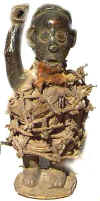 |
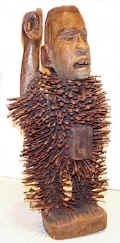 |
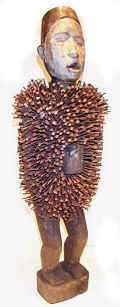 |
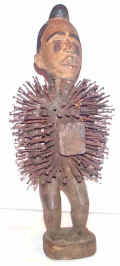 |
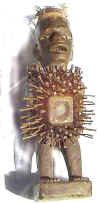 |
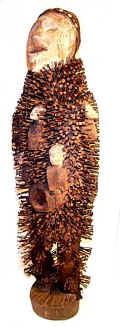 |
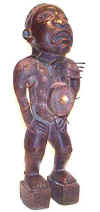 |
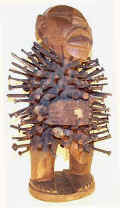 |
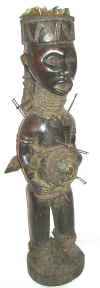 |
 |
|
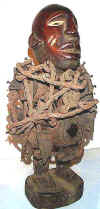 |
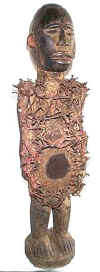 |
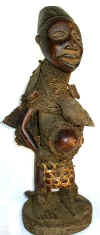 |
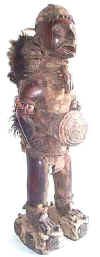 |
|
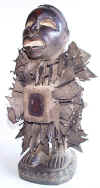 |
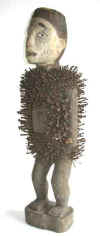 |
 |
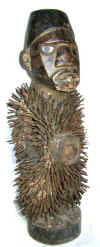 |
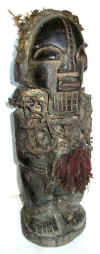 |
 |
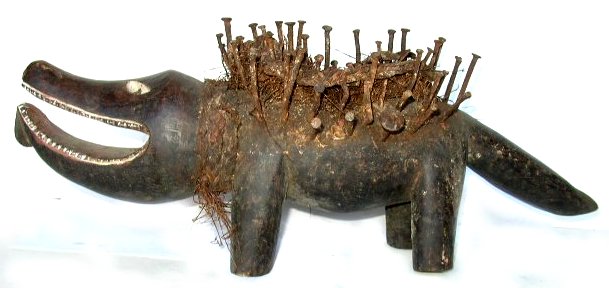 |
 |
 |
|
 |
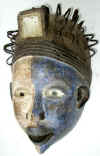 |
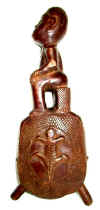 |
TRIBAL AFRICAN ART
KONGO (BAKONGO, BASHIKONGO, KAKONGO)
Both Congo Republics and Angola
The
Kongo may number about three million people.
Present in three countries – the Democratic Republic of
the Congo, Angola and the Congo Republic – the Kongo occupy the region at the mouth
of the Congo River. Numerous subgroups go to form the vast Kongo cultural complex, among
which are the Vili, the Woyo and the Yombe. These tribes produce a diversity of
artistic styles, with Kongo art being one of the best known.
The
Kongo demonstrate the extreme complexity of their traditions on major occasions, such as
the investiture of a chief or at funerals. The Kongo pantheon was small: one all-powerful
god who gave healing powers to the king, to the nganga, and to the heads of cults.
Besides their textiles of great renown, the Kongo had a funerary art of decorated steles
and funerary statues in stone, very often depicting the chief seated cross-legged in a
posture of reflection. Some of these statues were placed on tombs to aid the spirits of
the dead to join the world of the deceased. Wood
sculptures represent royal wives, hunters, musicians, and healers. Their postures vary:
sometimes they kneel in a position of respect, the head bent slightly backwards; women
might be depicted seated with the child they hold by the neck or whom they are nursing.
The cheeks are round, the face, carefully rendered, is realistic. The patina is smooth,
the bust scarified. Elaborate geometrical patterns occur on the pedestal or the body,
where they may be mingled with fine scarification marks. The figures were used to ward off
danger to mothers during delivery and to protect the health of the child. The
commemorative statues known as phemba were designed for women who had lost a child
and wanted another. These carvings, generally sophisticated and very graceful, were
thought to favor such a happy event.
A
maternity statue’s effectiveness depended on the dignity of the figure and its youth
(shown by the firmness of the breasts) and the jewelry, which augmented its beauty and
status.
Although the majority of carved figures are made of wood, many important pieces in metal and ivory have been found. Among them are numerous metal figures clearly influenced by the Portuguese missionaries -- statuettes of Christian saints, for example. In addition to the figures, crucifixes were also produced, in brass or bronze (using the lost-wax method of casting).
Nail
and mirror fetishes are a unique and important phenomenon of Kongo sculpture. In the
Kongo, all these fetishes are called nkisi. Nkisi means
“medicine”. Historically, there were two types of nkisi, public and
private, with some having vital democratizing roles, as sources of empowerment for rural
residents and individuals outside the court. At most basic, the nkisi represents a
container of empowering materials or “medicines” called bilongo. The
magical substances may be blood along with animal, vegetable, and mineral matter. They are
believed to invest the fetish figure with power and make it possible for the devotee to
establish contact with the spirit. The “medicines” are generally
secured in cavities in the stomach, head, or back to activate the work with the empowering
agent. The nkisi, properly endowed with magic substances and additions by the nganga
or doctor, had the power to act in a number of ways. There are four main types of nkisi,
used for different purposes. Nkondi are fetishes of ill omen, usually brandishing a
spear or a knife, while npezo are just as evil, but less menacing in attitude. Na
moganga are benevolent figures, which protect against sickness and dangerous spirits.
They help the hunter and the warrior; while mbula protect against witchcraft. All nkisi
can be used for a variety of purposes and their meaning is ambivalent. The
fetishes also may represent animals: two-headed dog, sometimes monkey.
Masks are rare. There were worn during initiation ceremonies and the funerals of important personalities, but also appeared to be embodied with a judiciary powers.